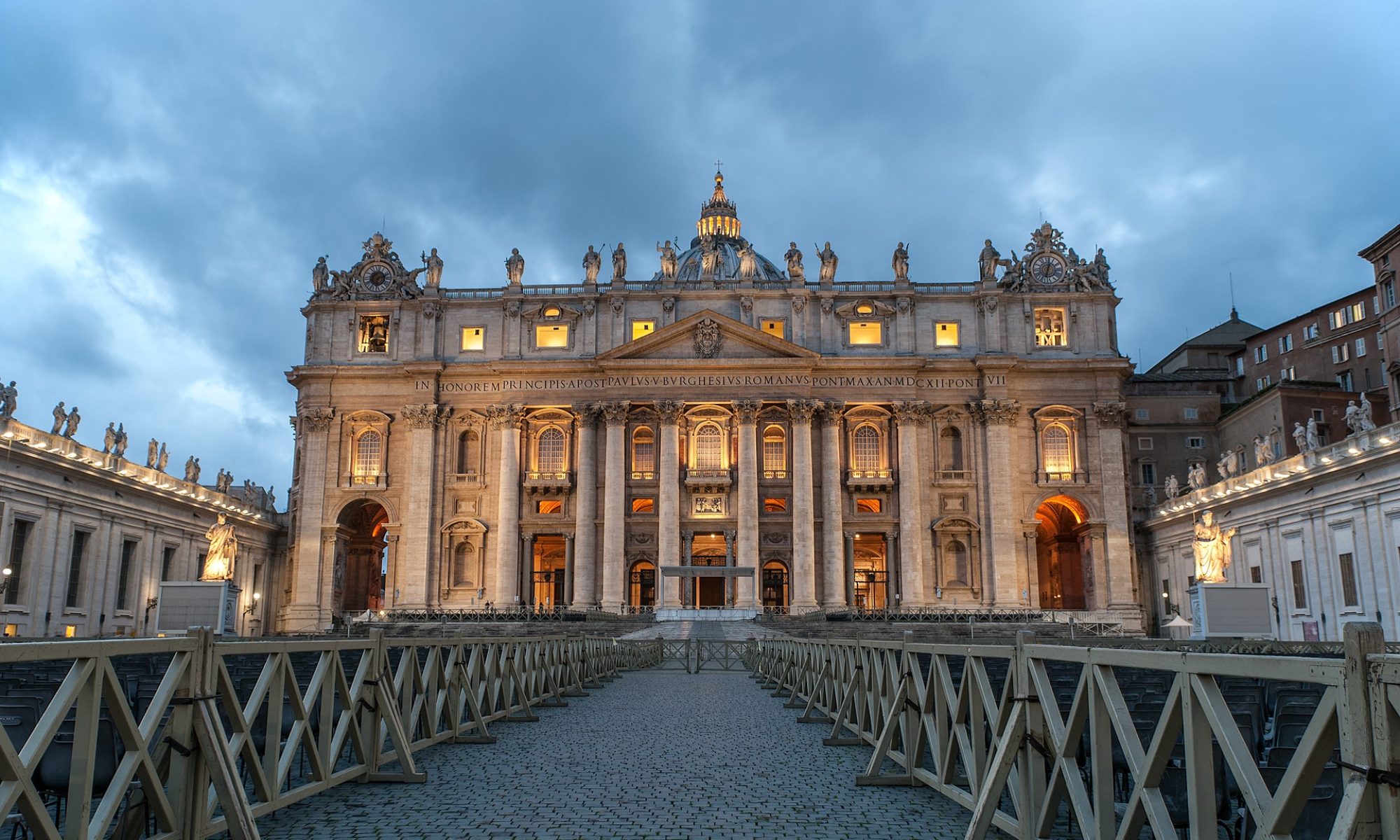March 9th, 2015
Twenty years is a sufficient time to reflect on the current trajectory initiated of the “Evangelical and Catholics Together” (ECT) initiative. Over the years this informal North American project spurred by Chuck Colson and Richard Neuhaus has produced a substantial series of documents on various doctrinal and moral topics. More than that ECT has set a friendly tone to a complex relationship that was previously marked by distance and even mutual opposition. I have already critically dealt with the context and the content of ECT elsewhere,[1] and so my primary concern here is to reflect on two commitments that ECT has embodied thus far and that perhaps represent its major on-going legacy.
Togetherness
The title of the initiative has proven to have had a far-reaching and programmatic value and has superseded in importance of the more than several thousand words of its texts. Evangelicals and Catholics stand together. They confess together. They pray together. They are together. They belong together. More than anything else the insistence on them being together is what really seems to matter. The outcome is that one group cannot be thought of without the other and vice versa. They continue to be distinct as Evangelicals and Catholics, but they are and shall be always together. Few of those familiar with ETC will be aware of the existing differences between Evangelicals and Catholics (which the ECT documents readily admit), but all of them will remember the emphasis on togetherness. In a world heavily characterized by religious conflicts and divisions, the psychological attachments of the word “together” prevail over the informational import of the initiative. Being together is an overarching commitment that addresses deeply felt concerns. The point is subtle because nowadays no one likes to be perceived as divisive and sectarian.
Generally speaking, togetherness is a highly valued condition. Biblically, however, it needs to be qualified in order not to become an intrusive idol. Togetherness, in fact, can become an idol if it is made an absolute in itself and is not defined by biblical truth. If this is the case, it can lead to unwarranted alliances and dangerous forms of unity, forcing people to say only “nice” things and only those things that do not question what is assumed as an already given unity. There is a whole stream of biblical teaching instructing God’s people to be aware of the dangers of forming spurious alliances (e.g.: Leviticus 20:26; 1 Kings 8:53; Proverbs 13:20; 2 Corinthians 6:17). The point here is that all references to togetherness need to be safeguarded and counter-balanced by a biblically defined theology of separation. Christian identity must define both sides according to the Word of God. ECT does recognize areas of difference, but its overall framework is to stress Evangelicals and Catholics being together in spite of being separated in very substantial ways. The former is stronger than the latter and ultimately defines the relationship. Therefore ECT has not only been an opportunity for dialogue and mutual understanding, it has from the beginning assumed the unity that needs instead to be biblically demonstrated. In this sense, ECT contains in its title a programmatic statement which is somewhat one-sided and over-stretched.
The Part for the Whole
The second remark has to do with another characteristic of ECT, namely its tendency to project what can be said of a single part onto the whole. Take, for instance, those who have been involved in the dialogue. The Catholic signatories of ECT are all biblically informed and very much influenced by a historically significant Protestant culture which has contributed to the shaping of their religious worldview. They are culturally close to their Evangelical counterparts and share with them important contours of the Christian life. All of this is mediated by a pluralist setting (i.e the USA) which crucially benefited from a Protestant input. Their attachment to Catholic popular devotions is discrete, and their underlining of certain Roman Catholic teachings and practices, which can hardly be found in Scripture, is almost unnoticeable. This is a very selected group of Roman Catholics and yet ECT, while legitimately speaking of them as “Catholics”, does so as if they embodied the whole or at least the majority of Catholics. Those who have at the very least a minimal experience outside of certain North American intellectual circles know that the bigger picture is much different. In many parts of the world Catholicism is largely defined by other religious commitments than those of ECT. What ETC says may apply to a group of people (be they Evangelicals or Catholics), yet the impression is given that the US Catholics with whom Evangelicals supposedly stand together are representative of the billion plus Catholics around the world. It is an overstatement, to say the least.
Secondly, the exchange between the part and the whole occurs also as far as the theological framework of the dialogue is concerned. Typically, each topic that is discussed by ECT is analyzed thematically, exploring the areas of agreement along with the points that need further study or where divergences can be found. In this way it is difficult if not impossible to get to the crux of things, i.e. the core issues which prevent Evangelicals and Catholics from being together on basic issues. Little attention is given to doctrinal presuppositions, spiritual assumptions, and the bigger theological frameworks that inform each one’s theological traditions. The outcome is that each document contains a cahier de doléances concerning the remaining areas of divergence but does not provide suggestions for coming to terms with what is at stake fundamentally between the two groups. It tends to go around it without tackling it.
Instead of ECT, perhaps a better and more realistic title for the next twenty years would be ECD: Evangelicals and Catholics in Dialogue.
[1] Christian Unity vis-à-vis Roman Catholicism: a Critique of the Evangelicals and Catholics Together Dialogue, “Evangelical Review of Theology” 27:4 (2003) pp. 337-352. https://vaticanfiles.org/2015/02/christian-unity-vis-a-vis-roman-catholicism-a-critique-of-the-evangelicals-and-catholics-together-dialogue/

